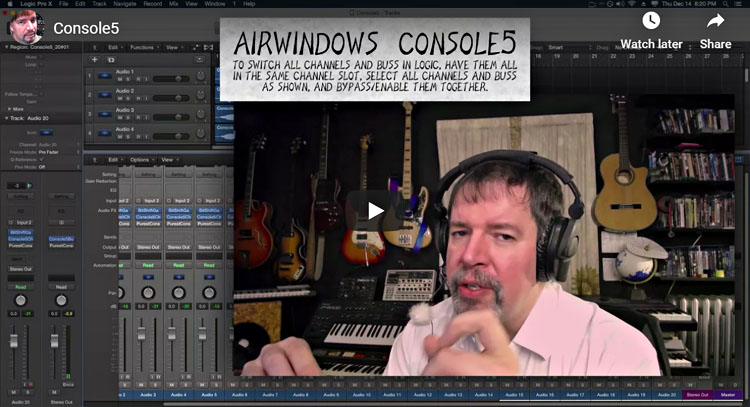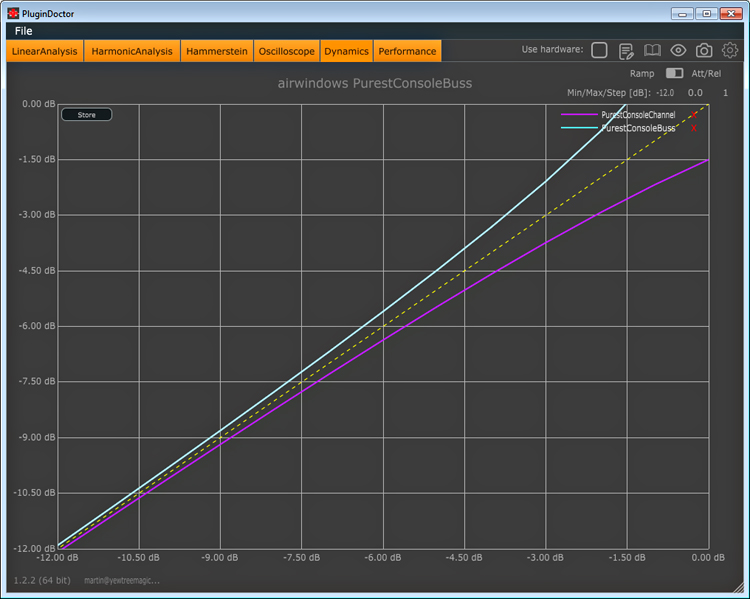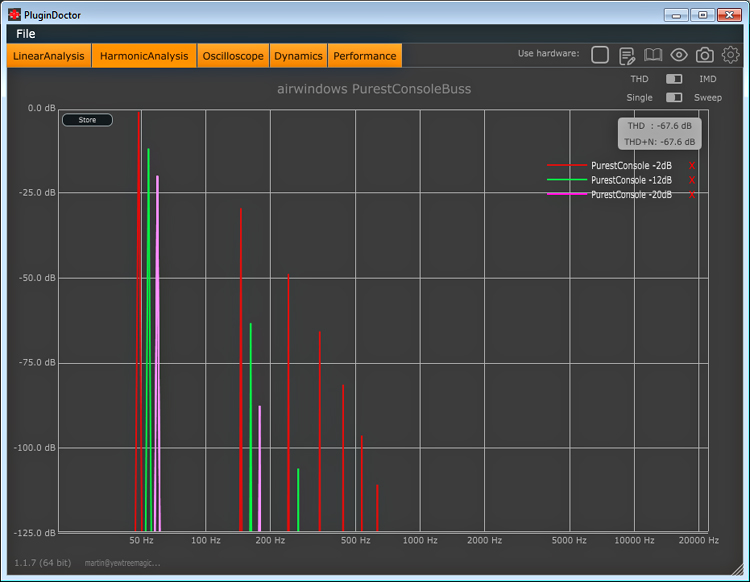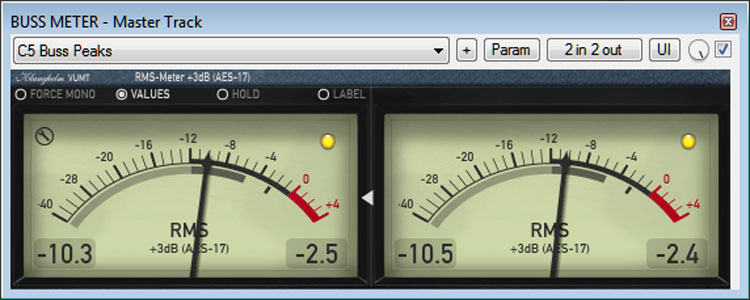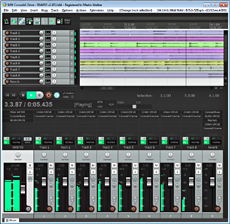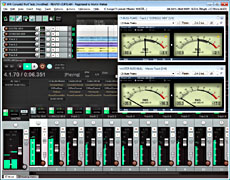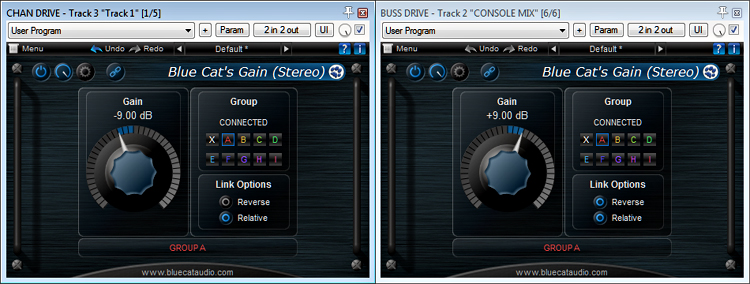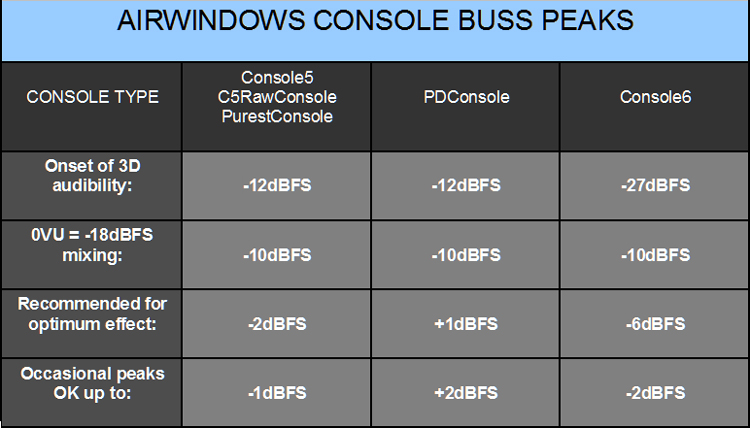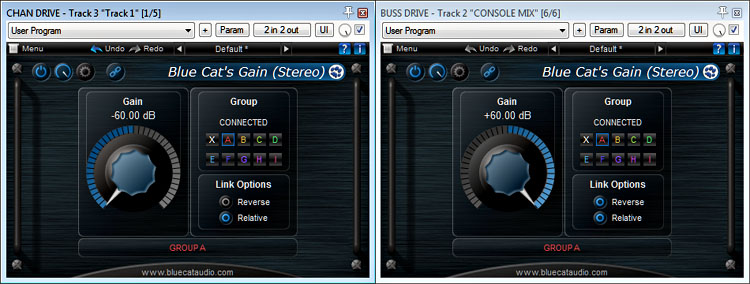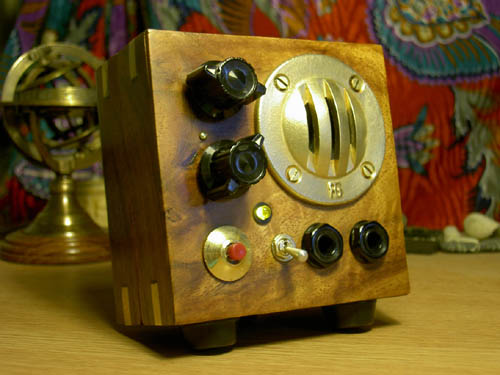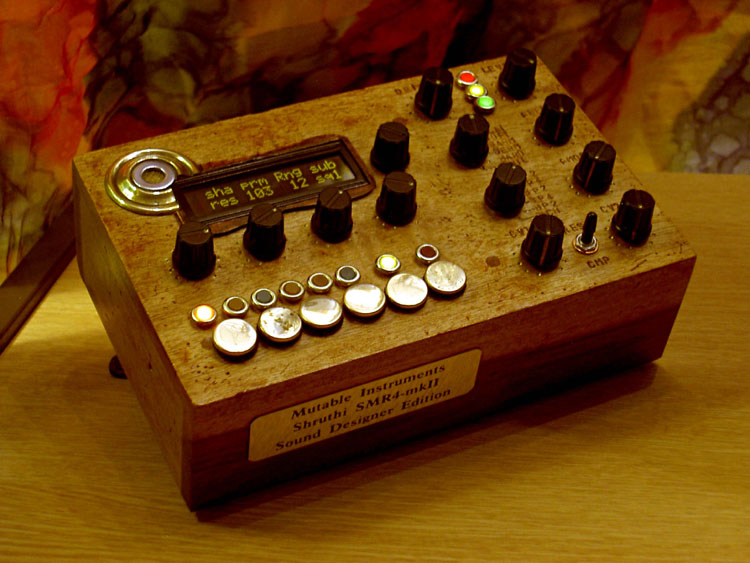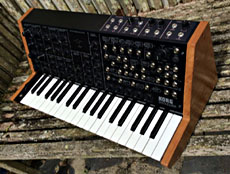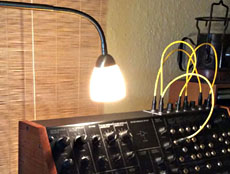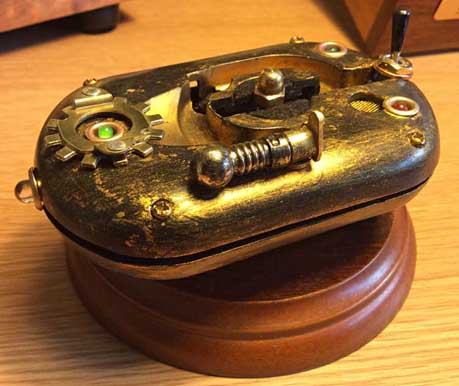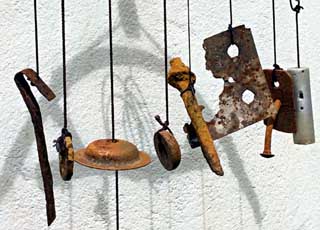SOUNDWORLDS 7: Optimising Airwindows Console5/6/7
AIRWINDOWS CONSOLE SUMMING
****UPDATED IN APRIL 2021 TO INCLUDE CONSOLE7 DETAILS****
As a fellow mad scientist I'm totally intrigued by the many unusual sonic avenues Chris Johnson explores in his large range of Airwindows plug-ins. He releases them free to all but encourages Patreon donations if you like what you hear, and I certainly do like what I hear. However, some musicians still seem to be mystified by their lack of graphic interfaces and written manuals.
So here's some information that should hopefully help you get the best out of Airwindows Console5, 6 & 7. First, the basics. They are two stage encode/decode processes – you place one instance of the ConsoleChannel plug-in on each of your playback channels after any other FX, and then apply the reciprocal process at the mix buss with a single instance of the ConsoleBuss plug-in (you'll find both in the Airwindows zip files). With a single channel you'll hear no change, but as you mix more and more channels together they interact in a subtle fashion. To my ears the results are subtle yet glorious, adding glue and spacial depth to mixes, a sense of space around each sound that aids separation, while the gentle accentuation of the mids gives them extra clarity and detail in a quite remarkable way. Begone any flatness of your digital mix!
CONSOLE 5, 6 & 7 VARIANTS
There are now various Console5 variants. PurestConsole provides the most subtle yet least coloured results, applying distortion at the channel stage, and then reciprocal distortion at the buss, and is still favoured by some musicians. PDConsole is similar, but with added Airwindows Purest Drive saturation (via a variable Drive control), so you can give your music more harmonic attitude, especially if you push audio levels at the buss (see later).
The classic Console5 is effectively PurestConsole with the addition of new encode/decode slew mojo, providing more 'glue' while accentuating low-mids and mids, but it also gently tames the low end.
For a long time my personal favourite was C5RawConsole, which was the original Console5 release, with a different algorithm and without any low-end roll-off. Yes, it can generate DC with some Bass/synth signals, but I resolved every instance of this simply by defaulting its Center parameter to 0.30 on all C5RawChannel and C5RawBuss plug-ins, which gently pulls errant waveform excursions back to the centre while only rolling off the low end at a miniscule -1dB @ 1Hz. Just keep an eye on your meters to spot any low end that creeps up but doesn't go down again when the music stops!
Console6 arrived in May 2019, dispensing with the slew mojo in favour of a new rather more aggressive algorithm that kicks in at significantly lower input levels (more on this in the next section), while in December 2020 Console7 was released with a significantly smoother onset of saturation, plus integral ultrasonic filtering (to minimise high-frequency aliasing anomalies), for a noticeably more 'analogue' sound.
HEARING THE DIFFERENCE
Some musicians found it hard to hear any Console5 improvements, while others fell in love straight away. After navigating a rocky learning curve myself, I think this is largely down to two aspects - channel count and gain staging, so here are some hints and tips that have worked well for me.
First, remember that the whole point of the entire Console series is its special action when mixing channels together - with a simple 8-channel project I could scarcely hear any difference, but bring the total to twelve or more channels and the cumulative goodness started blossoming, with tiny details more focused and surrounded by their own 'space'.
The second aspect is driving the Console5 buss sufficiently hard - to get the best out of it you need to push your peak levels a little higher than normal. If your DAW master buss peaks at a conservative -12dBFS, the 3D improvements may be there but in miniscule amounts. For instance, although the first project I tried it on had 16 channels, I was only just able to discern any 3D improvement when listening intently under headphones.
A more sensible peak buss level for Console5 seems to be -6dBFS, at which point the 3D improvements become rather more audible. However, if you want to aim for the maximum 3D effect, get your buss peaks close to -2dBFS, or even shave a little off your transients by pushing your buss peaks slightly higher (especially with the PDConsole version). So, if you've previously failed to be impressed by Console5, twelve or more channels mixed at a mix buss level peaking around -2dBFS may well prove to be your 'wow' moment.
DRIVING CONSOLE 6 & 7
As mentioned earlier, Console 6 needs significantly less input to hear the results, since the Console6channel plug-in makes things significantly louder and more aggressive than any of the C5 variants, while the Console6Buss plug-in pulls levels back a lot harder to compensate. I found that I had to reduce all my channel levels by around 6dB for the Console6 peak buss level to reach -2dBFS as it had previously with Console5. The Console6 sonic result is also different from any of the Console5 variants - it's got a somewhat 'bigger' and slightly more 'overdriven' rock console sound at -2dBFS, which will suit a lot of music styles, but perhaps not the more delicate acoustic and electronic ones.
So I started with a target of -6dBFS for Console6, but then relaxed this to -10dBFS once I'd got more used to its sound, and continued with this target with Console7. Being able to still hear its effect at lower buss peak levels such as -10dBFS will also appeal to those who to prefer to work with more modest -18dBFS average channel levels, so for both Console6 and the subsequent Console7 I've settled on this target peak buss level of -10dBFS.
MEASURING YOUR BUSS PEAKS
You should never drive any single Console5, 6 or 7channel plug-in as high as 0dBFS, as it will clip, but since the whole point is to mix multiple channels, this is unlikely to happen in practice – the important target for me is that once all your combined channels reach the Console5 mix buss plug-in they should collectively peak around -2dBFS (or -10dBFS with Console 6/7 for more subtle results).
However, individual channel levels required to get these mix buss peaks depends entirely on how many channels there are - in typical projects of between 16 and 24 channels I found the loudest instrument (typically kick, snare or bass) peaked at around -10dBFS, and most of the others somewhere between -12dBFS and -18dBFS, but if your projects have 30 or more channels the contribution from each will have to be significantly lower.
If you have no other plug-ins on your master channel then you can probably use its peak-reading meter to monitor console5/6/7 buss peaks, but if like me you tend to have several other processes after the mix buss then the simple solution is to insert a peak meter plug-in immediately before the Console5Buss/Console6Buss/Console7Buss plug-in on your master channel. I used Klanghelm's VUMT (others are available, including the freeware mvMeter2 from TBProAudio, or you could use Voxengo's SPAN).
Now play back your song while monitoring the maximum peak level. I found the RMS mode of VUMT is perfect for this, since its scale is -12dB at the half way point (approximately the 'vanishing point' for the Console5 3D effect), while its 'LED' lights up yellow with peaks at -6dB, and red at 0dB. Set VUMT so its maximum peak level remains on hold, and then for maximum 3D effect aim to have the yellow LED on as much as possible but avoid it ever turning red.
SINGLE KNOB DRIVE CONTROL
Now wouldn't it be lovely if we could globally optimise the Console5/6 3D effect to suit each project, without worrying about absolute channel levels? Yes, that's what I thought too, so I downloaded the excellent yet freeware Blue Cat Audio BC Gain 3 plug-ins.
These are simply gain controls, but can be 'ganged together' in groups, either changing gain in the same direction or in reverse. Insert one immediately before each instance of the ConsoleChannel plug-ins, click on the 'Not Connected' immediately below the gain knob, then click on the Group A button.
(I've renamed all these plug-ins as CHAN DRIVE in the above screenshot to make their function clearer). Similarly, insert one immediately after your ConsoleBuss plug-ins, connect this once again to Group A, but this time also select 'Reverse' in the Link Options (renamed as BUSS DRIVE).
Now, with them all linked together you can open any of the CHAN DRIVE instances and alter its gain knob - all the other channel instances will move in tandem, while any buss instances will move in the opposite direction - effectively the overall audio level remains constant outside of the Console 5/6 channel/buss pairing. However, you can now adjust up or down to get your Console5 buss peaks at the desired level as read by your peak meter. BC Gain has eight groups, so if you have large projects containing various group busses you can even drive your console5/6 drum buss differently from your console5 guitar buss and so on.
MEASURING THE 3D MAGIC
To further investigate the Console5/6 changes, I created a 12-channel Reaper test project with two separate mixing busses, one with a pre-FX send from all playback channels so they were all mixed digitally by the Daw itself, and one with post Console5 FX sends from all channels sent to their own Console Buss plug-in, to complete the encode/decode pairing.
The outputs of both these buss channels were then sent to my Master Output channel. I could now audition the standard Digital mix or the Console5 mix by soloing these busses in turn, or by leaving them both active but inverting the polarity of the Digital mix buss I could hear and measure in real time the difference between the two at different peak Console5/6 buss levels - the magic 3D components!
HERE ARE ALL THE MOJO RESULTS
These measurements bore out all my previous listening tests. With C5RawConsole/PurestConsole/PDConsole buss peaks of -20dBFS, the difference with my eight twelve test tracks measured around -56dB, which equates to an almost inaudible 0.2% of 3D peak additions.
The difference signal with the classic Console5 variant was more difficult to quantify since it retains a lot of bass, due to its DC-defeating low-end roll-off filter (I measured this as -3dB @ 37Hz), although I managed to minimise the difference by applying an identical Airwindows Hermepass HPF filter to the digital mix.
Driving all four consoles to -12dBFS buss peaks raised the 3D difference in my tests to about -40dB, which is 1% of the total (probably the onset of 3D audibility for many listeners). With buss peaks at -2dBFS, I measured the Console5, C5RawConsole and PurestConsole differences around -17dB, which is about 14% peak 3D contribution but sounding wonderful, although slightly different in each case due to the differing algorithms.
Meanwhile, PDConsole could be driven up to +1dBFS before reaching a similar 3D contribution. My listening tests suggest that you can push all variants to -1dBFS very occasionally (+2dBFS for PDConsole), but do listen out for strain on loud bass notes, and once you get any buss peaks to 0dBFS (+3dBFS for PDConsole) you may start to hear distortion or brittle breakup on transients, so do your best to avoid these.
WHAT'S NEW IN CONSOLE6 & 7?
Console6 and 7 are designed to kick in at much lower levels, and my Console5 -40dB onset of 3D audibility now occurred with Console6 buss peaks at a much lower -27dBFS (see table). Above this the 3D distortion products rose very gradually, reaching a similar 14% peak 3D contribution to the Console5 range at -6dBFS. Console6 offers a big, intense console-style sound, especially as you push peak buss levels closer to 0dBFS.
In practice, with Console6 you could aim anywhere between buss peaks of around -20dBFS for a very subtle effect, peaks around -10dBFS to revert to the oft-recommended average mixing level of 0VU = -18dBFS, and -6dBFS for Console5-strength summing. You can push the levels slightly higher to perhaps -2dBFS, but you'll start to hear more 'crunchy' results and finally a nasty, gritty breakup in the sound. However, how hard you drive Console6 & 7 is far more up to you than with C5.
Your 3D Console mileage may also vary depending on your musical material. Chris Johnson's own demo example was around 20 channels of himself singing 'Ahh', together peaking at around -2dBFS, and this is a perfect way to highlight the strengths of his Console5 algorithm, since all 20 channels are at similar high-ish levels but together pushing the 3D amount to the max, so they each benefit from some 3D improvement. With Console6, he had to pad down his choir channels a lot, 'simply to stop it exploding in distorty noise'. In general, I suspect Console5/6/7 won't improve every mix, but they should enhance those that already leave some space between the instruments, and are not swamped in reverb, giving them more separation and depth.
WRAPPING IT UP
So there you are. With a peak meter and Blue Cat Audio's gain plug-ins you can tweak the amount of Console5/6 3D effect whenever it takes your fancy during the mixing process, from inaudible to potentially over the top.
Also, with a normal project that routes all channels via Console5/6/7 channel instances straight to your Master Channel with its corresponding Console Buss plug-in, you can slide any CHANDRIVE gain knob down to effectively act as a '3D bypass' control (see above screenshot). This is a great way to quickly A/B the improvements, since with BC Gain 3 at its minimum setting of -60dB all the 3D effects become vanishingly small.
Ironically, while researching all the ways to maximise the 3D effects of these Console plug-ins, I learned so much about 3-dimensional mixing in general that my mixes improved in various other ways too! I even switched my allegiance from C5RawConsole to PurestConsole, as its euphonic contributions sat better with my music.
LATEST APRIL 2021 THOUGHTS
As I update this writeup a few months after the Console7 release, I'm still exploring both Console6 & 7 strengths and weaknesses, and find myself choosing one or the other depending on the project. Sometimes Console7 will give a more detailed 'hi-fi' result (particularly with electronic material) when Console6 enhancements sound 'over the top', but on other more rocky projects I still prefer the brasher sound of Console6. They are certainly both easier to use than the Console5 series, although PurestConsole still offers a delicacy and transparency that doesn't mean it's been totally superceded.
Bravo to Chris Johnson for such wonderfully effective plug-in designs - let's hope that we can encourage him to investigate incorporating grouping and his PureGain technology into the next generation of Console plug-ins, so we can then have effective drive control for every instance from a single Airwindows slider. Do support him via his Patreon account so he can continue to create more magic for us all!
AIRWINDOWS CONSOLE SUMMING: AUDIO DEMOS
Further Information
Airwindows Console Range ..Download it here and experience the magic for yourself!
Klanghelm VUMT meter ......Monitor Console5 Buss peaks with panache.
Blue Cat Audio Gain Suite ...The freeware plug-ins enabling variable Console5 drive.
SOUNDWORLDS 1 - Steampunk Buddha Machine: Martin's first exploration of the steampunk world, on this occasion circuit-bending a buddha machine loop player.
SOUNDWORLDS 2 - Steampunk Shruthi SDE monosynth: Another foray into steampunk territory, this time chronicling extensive mods to a Mutable Instruments Shruthi MIDI monosynth.
SOUNDWORLDS 3 - Korg MS-20 Retro Expansion: This time Martin adds an entirely new front panel containing sixteen additional controls to his Korg MS-20 Mini synth, featuring FM, PWM, Sync, Diode Ring Mod, multiple oscillator waveform outputs & enhanced mixer, as well as some gorgeous cherry hardwood side panels!
SOUNDWORLDS 4 - Steampunk Synth Luminator: To illuminate the controls of his Korg MS-20 Retro Expansion synth, Martin designs a desklamp resplendent in full steampunk regalia.
SOUNDWORLDS 5 - Steampunk Photon Hunter: Another steampunk creation, this fascinating device responds to CHANGES of light level, enabling the capture of completely new soundworlds!
